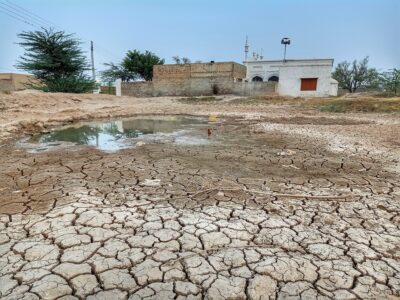
By John Richardson
During the 2011-2017 California drought, lots of media attention was focused on one of the largest consumer of water in the state: almonds. Fueled by a boom in health-minded consumers and a climate well-suited for almond trees, almonds have quickly risen to become one of the largest and most lucrative agricultural products in California. But exactly how sustainable and environmentally friendly are California almonds?
Almonds are currently one of the biggest cash crops in California, producing as of 2014 over 80 percent of the global almond supply. Their rise into prominence has come from a variety of factors. For one, the climate of California’s Central Valley is ideal for growing conditions of almond trees. Demand for almonds as a healthy, crunchy alternative to many snack foods has also risen over the past decade, both domestically and abroad. In fact, seventy percent of California’s almond crop is sent overseas, making it the largest agricultural export in the state.
With all of that demand has come a host of wealth for California farmers, but not without its share of environmental costs. By far the largest is water use, something that is already a hotly contested resource in the American West. Almonds are water-guzzlers, needing around two liters of water for each kernel. Compared to many of the other food crops that could be grown in the region, almonds have a very high water footprint.
This on its own wouldn’t warrant almonds’ bad reputation compared to many of the other thirsty crops grown in California, such as grapes and alfalfa. The problem arises from differences in their management. Unlike other crops, almonds must be grown year-round, requiring constant water input. Typical crop fields can run fallow for a year and be fine, but almond orchards can’t recover the same way. A few months without water and the trees die. A farmer that has invested his or her money into an almond orchard is not going to want that investment to go to waste and ends up having to rely on groundwater from wells to provide for the crop. What’s worse, the high price of water drives farmers to plant even more almond trees in order to turn a profit. This vicious cycle is depleting California’s groundwater reserves at a massive rate, only exacerbating the water crisis.
Another major impact that the almond industry has on US agriculture comes from its pollination. While there have been some efforts to genetically engineer self-pollinating almond trees, almond farmers largely rely on bees to pollinate their crops. This has spawned a cross-country pollination business for American beekeepers, which helps them to support their struggling honey business. This financial interdependency of beekeepers and almond farmers does come with challenges, as the traveling can increase the bees’ chance of exposure to diseases and hive theft can rob a beekeeper of his or her livelihood.
So, what is the solution here? Will the higher revenue from the almond crops give Californians the cash they need to invest in better water management? Or will the state fall into an irreversible feedback loop of water loss forcing farmers to grow more water-thirsty almonds? Or are almonds being extensively overblown and scapegoated? No matter the case, perhaps you should think twice before choosing almonds as your healthy snack of choice.
A version of this post was originally published on the blog of the Earth Institute Center for Environmental Sustainability (EICES). John Richardson is a student in EICES’ SEE-U NYC course on the agroecosystems of New York City, New York State, and the surrounding environs.




What research has also been done on the effects of increased well drilling and the depletion of California’s underground aquifer?
What kind of almond trees do you grow in California? In the south of France almond trees grow and produce without being watered. Is it because you’re planting too many in the wrong climate and expecting too much?
Based on your article, almonds require 2 liters per kernel, which is about 0.5 liters of water per Calorie. Based on UN FAO estimates, this is 50% more efficient than average world agricultural production (1 liter per Calorie) (http://www.fao.org/docrep/016/ap106e/ap106e.pdf). Add to this the amount of water it takes to produce a Calorie of animal protein (about 8 liters), this point is worn out and a bit moot. Simpy stated, it takes a lot of water to grow food, and very few foods provide the nutrient density of almonds per drop of water applied (http://afarmerincalifornia.com/2015/04/09/calories-vs-water-use/).
Although groundwater use is concerning, new regulations will help reduce over-drafting. Even though the past few years, California has seen an rise in aquifer levels (https://mavensnotebook.com/2018/08/29/managed-aquifer-recharge-in-california/). Efforts are ongoing to increase groundwater banking to provide a more resilient water system to supplement the surface water supplies.
Re: Bees. Beekeepers choose to bring their hives to California due to the economic value it brings, and this value has increased the financial viability of beekeepers in the US, allowing them to stay in business. No other industry pays near the amount that almond farmers do ($225-250/hive for 3 weeks). Although pesticide usage during bloom does occur, recent efforts to reduce fungicide applications have occurred, moving sprays to evenings and even some companies not spraying during bloom.
Perhaps a trip out of the classroom and conversations with all of the parties (beekeepers, farmers, and regulators) would be useful. Otherwise the point about scapegoating seems to be the most relevant of this opinion piece.
David Doll makes good points, Almond the most effective crop at converting a drop of water into protein, calories, dollars. Because of this efficiency, growers can convert 5 acres of cotton into 1 acre of almond and make the same profit while using 70% less water and if they choose, leaving 4 acres of land ‘fallow’. There is no such thing as GMO almond in use anywhere, and Almond growers have been hard at work to improve bee health. Regardless, apiarists still choose to bring bees to California as it is essential cog in their season long economics. I am a bit surprised EI did not review this blog more closely!
Patrick, when you say that almonds are “the most effective crop at converting a drop of water into protein, calories, dollars”, what do you mean by that? Especially protein and calories. In the article, John makes a reference to a National Geographic infographic which is very telling. The amount of water per calorie and protein mass unit for almonds exceeds, by far and large, almost all of the crops compared there. However, as the same goes for the weight (the amount of water that takes to produce a mass unit of the product), one could still say that almonds are very effective at packing proteins and calories per drop of water. It may be somewhat ironic that being so water-intensive, they end up naturally as dried fruits. It would have been nice if National Geographic had illustrated the density issue as well.
On the other hand, a fast scan of the FAO reference in David’s comment regarding the amount of water it takes to produce a calorie in a plant-derived product was not enough to find the data he is citing. But when he mentioned the “nutrient density of almonds” then I follow. If bees are an issue, which they are, is there an environmentally friendlier way of benefiting them?